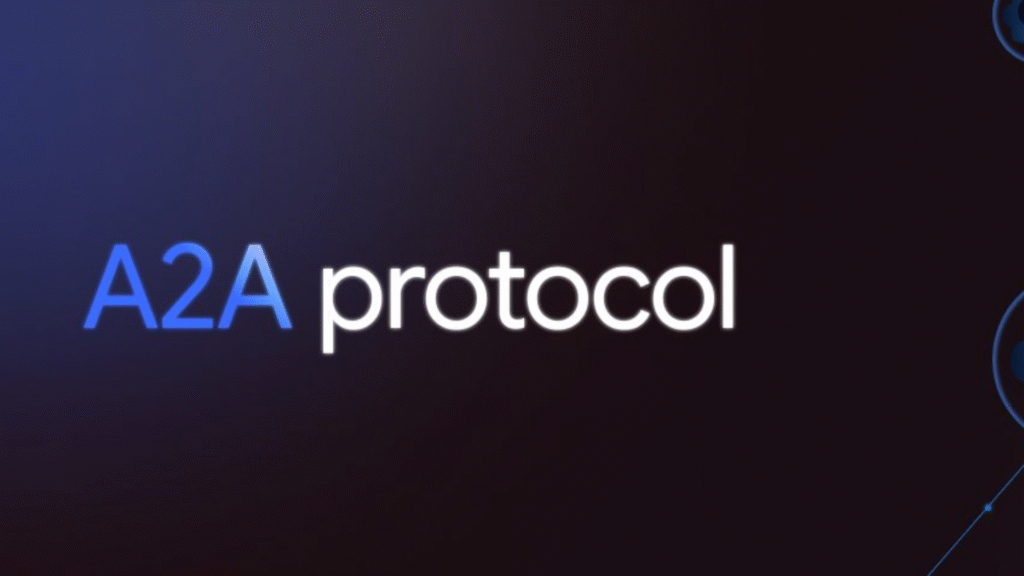In a transformative leap for synthetic intelligence, Google has officially added A2A (Agent-to-Agent) verbal exchange. Simultaneously, HyperCycle is making strides in the direction of improving AI agent interoperability throughout decentralized ecosystems. Together, those tendencies are paving the way for smarter, greater collaborative AI systems, revolutionizing the way sellers engage and work together.
What is A2A (Agent-to-Agent) Communication?
Understanding Google’s A2A Initiative
A2A is a new framework from Google that permits AI agents to communicate, collaborate, and change statistics without delay with each other. Previously, AI fashions operated in remote environments; however, with A2A, Google is breaking those limitations by means of introducing a standardized conversation protocol.
Key features of A2A include
- Efficient Information Exchange
- Collaborative Task Delegation
- Collective Learning in Real Time
- Built-in Privacy and Security Measures
By facilitating smoother interplay between AI models, A2A opens the door for an extra unified and shrewd AI environment.
HyperCycle’s Breakthrough in AI Agent Interoperability
How HyperCycle Enhances Cross-Platform AI Collaboration
While Google leads with A2A, HyperCycle is advancing the cause of AI agent interoperability via its blockchain-primarily based platform. HyperCycle allows exceptional AI retailers — even from competing groups — to collaborate securely and transparently.
Key innovations by HyperCycle:
- Decentralized AI Communication: The Use of Blockchain
- Trustless, Verifiable Interactions
- Smart Contracts for Task Management and Payments
- Enhanced Privacy for Proprietary Data
With HyperCycle’s approach, AI retailers can correctly alternate know-how and offerings without counting on centralized government, ensuring scalability, transparency, and consideration.
Why A2A and HyperCycle Matter for the Future of AI
The aggregate of Google’s A2A and HyperCycle’s interoperability framework should cause primary shifts inside the AI enterprise:
Creation of Self-Organizing AI Networks
Smarter automation throughout industries like healthcare, logistics, and finance
Opportunities for smaller developers to compete in an honest, decentralized AI environment
Improved Ethical Standards in AI Operations via Transparent Governance

Together, these technologies should redefine how autonomous systems function, growing an international community where AI sellers collaborate as fluidly as human teams.
Final Thoughts
The launch of Google’s A2A and the development of HyperCycle signal a chief shift towards open, steady, and intelligent AI collaboration. As these technologies mature, the dream of interconnected, self-sufficient AI ecosystems becomes increasingly tangible, using innovation across industries.
FAQs
What is A2A with the aid of Google?
A2A stands for “agent-to-agent” conversation, a new framework that allows AI models to have interaction and collaborate without centralized control.
How does HyperCycle improve AI agent interoperability?
HyperCycle uses the blockchain era to create decentralized, steady, and verifiable interactions among specific AI marketers, promoting consideration and collaboration.
Can AI dealers from distinctive companies talk through A2A?
Yes, Google’s A2A is designed to be a standardized communication protocol, permitting AI sellers from unique companies to work together seamlessly.
Is A2A conversation steady?
Absolutely. A2A integrates superior safety protocols and privacy measures to ensure information protection for the duration of agent-to-agent communications.
What impact will A2A and HyperCycle have on industries?
Industries like healthcare, finance, and logistics will gain from smarter automation, faster hassle-fixing, and greater efficient AI collaboration, leading to transformative growth.
Read Also: Unlocking Business Growth with the Management Guide EWMagWork



